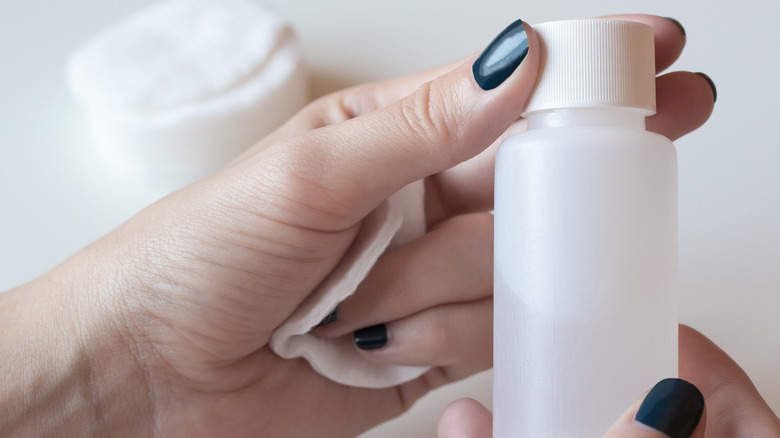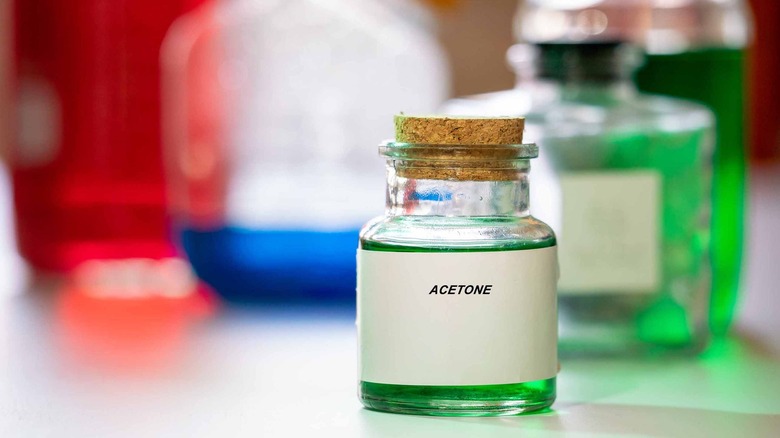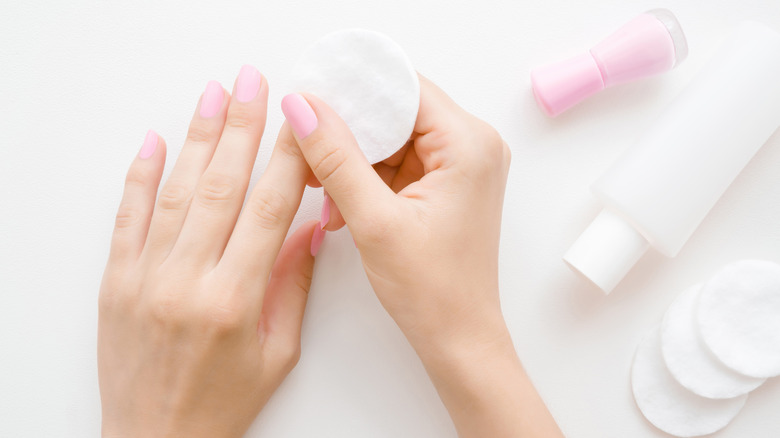Is Acetone Nail Polish Remover Actually Safe To Use?
As the old saying goes, beauty is pain. Although some cosmetic efforts, like bikini waxing or eyebrow plucking, are undoubtedly uncomfortable, most people aren't interested in any potential long-term pain or risk. Because of this mindset shift, there has been a rapid uptick in natural beauty products made with fewer, if any, harsh chemicals.
Despite this, even the most discerning consumer is no doubt confused by some of the schools of thought on the matter. For example, preservatives like parabens are routinely decried as being unnatural and therefore dangerous, but they're also known in medical circles as one of the safest preservatives out there because allergic reactions are very rare, JAMA Dermatology explains. Paraben fear has in part led some people to opt for natural products with botanical extracts that are far more likely to cause allergic reactions, and can even result in photosensitization (the skin burns or tans more rapidly than it would have otherwise, per ScienceDirect). This puts the user at higher risk for sun damage and a spate of skin cancers.
All of these competing viewpoints on cosmetics and the like have also muddied the waters when it comes to using acetone nail polish. But what's a confused person to do when the polish starts to chip?
Here's why acetone nail polish can be problematic
One of the most common solvents found in nail polish removers is isopropyl acetone. It's the magic ingredient that helps polish remover wipe away lacquer in a few strokes, ridding people of peeling polish that is past its prime. It's technically non-toxic unless swallowed or otherwise ingested, according to Sinclair Dermatology. Although few people are likely to drink the stuff, it can still do some damage to the nails, cuticles, and any skin it comes in contact with. Frequent use can really dry out and otherwise wreak havoc on the area.
The Campaign for Safe Cosmetics adds that the risk associated with acetone goes far beyond some cranky cuticles, however. In fact, the organization explains that potential side effects of exposure to the solvent include nausea, headache, respiratory problems, and even eye irritation. Consistent, repeated exposure to acetone fumes or formula (as a result of workplace conditions) has resulted in all of those symptoms, plus weakness, sore throat, intestinal distress, heartburn, and more. That's an awful lot of unfortunate illnesses to suffer just to have or provide some nice nails.
Alternatives to acetone nail polish remover
There are a number of nail polish remover brands on the market that do not contain acetone; however, Sinclair Dermatology is quick to point out that those alternatives contain other chemicals. Even natural nail polish removers come with their own risk, albeit smaller since it often takes much more scrubbing. Therefore, there is increased stress and damage to the fingernail areas to get the job done.
The tough truth is that acetone nail polish removers will get the polish off quicker and with less effort than alternatives. If that's appealing to you, consider taking steps to minimize exposure. For example, never soak the fingers in acetone-based remover. Instead, use a makeup round or cotton ball to gently apply the polish remover to the nails. Avoid the skin and cuticles as much as possible, and wash hands thoroughly when done. In the unlikely case that you change polish every day or two, it's probably time to cut back. Your nails will thank you!


